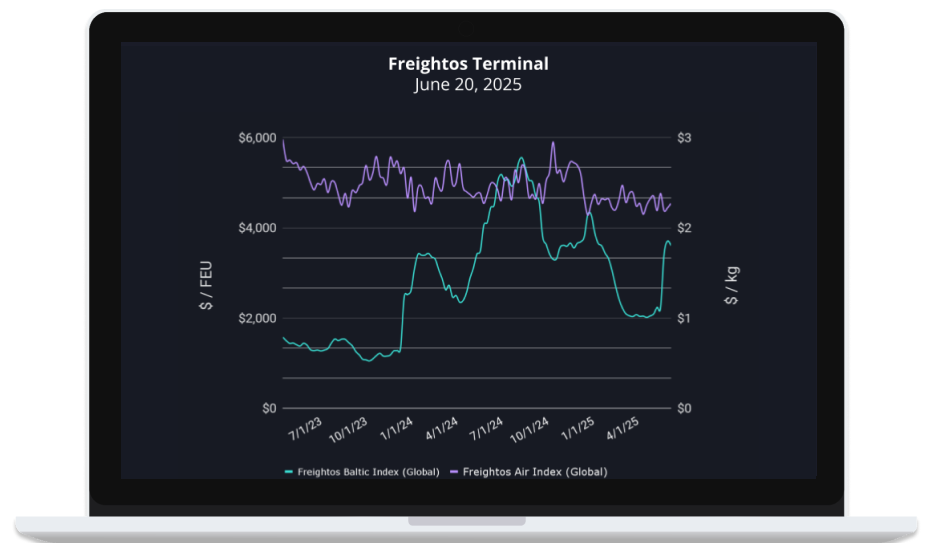Current Landscape of Transpac Shipping Rates
The international shipping sector has recently experienced shifts in transpacific shipping rates. Notably, there has been a substantial decline in these rates over the past couple of weeks, offering crucial insights into the dynamics of global logistics.
The Impact of Recent Events
As stakeholders in global trade hold their breath for Iran’s reaction to recent U.S. actions, the potential for considerable implications loomed large. The possibility of Iran’s closure of vital waterways could have disrupted logistics chains and energy markets worldwide.
However, just as uncertainty appeared to reach a boiling point, a ceasefire was announced. After an initial Iranian attack that signified heightened tensions, news from the U.S. government indicated a halt to escalating conflicts. This momentary peace provides a glimmer of hope that could help avert major disruptions to oil and freight markets alike. While the ceasefire remains fragile, its existence bodes well for the resumption of smoother shipping operations.
Tanker Operations Remain Steady
Throughout the previous twelve days of conflict, shipping activity in critical channels like the Strait of Hormuz has shown relative stability. Reports indicate that tanker flows have proceeded without significant interruption. Similarly, major port operations—in particular, Dubai’s Port of Jebel Ali, a transit point for containers moving between the Far East and North America—maintained their footing during this challenging time.
Logistics professionals, particularly those relying on reliable transport and forwarding services, can breathe a sigh of relief as ports like Haifa and Ashdod in Israel have also continued efficient operations. Despite minor adjustments in some shipping routes, overall container shipping rates along Israeli lanes remained stable.
Širší ekonomické důsledky
As the logistics sector looks toward recovery, attention shifts once more to other pressing economic issues, such as trade tensions between the U.S. and China. The possibility of tariff negotiations facing firm deadlines is approaching—countries subjected to U.S. tariffs have until early July to settle deals to avoid more significant duties. The outcome of these negotiations holds the power to shape not just tariffs but also the general landscape of global logistics.
An Uncertain Trade Outlook
While some agreements may be inching forward—including a tentative deal with the UK—very little progress has been reported with major trading partners like the EU and Canada. The looming deadline raises stakes and could potentially lead to unilateral tariffs should the negotiations falter. This energetic economic backdrop casts a shadow over the logistics industry, raising questions about planning and stability.
Shipping Rate Trends
Despite the backdrop of geopolitical tensions, there are tangible trends manifesting in shipping rates. Demand spikes early in the month saw a contrasting rise in container volumes, leading carriers to increase shipping capacity by 13%. However, fluctuating requirements are now pushing rates downward.
| Trasa | Latest Rate | Previous Week | Změna (%) |
|---|---|---|---|
| Transpacific to West Coast | $3,500/FEU | $5,800/FEU | -7% |
| Transpacific to East Coast | $6,300/FEU | $7,200/FEU | -12.5% |
| Asie do Evropy | $3,100/FEU | $2,800/FEU | +6% |
| Asia to Mediterranean | $4,400/FEU | $4,800/FEU | -9% |
The sustained easing of transpacific rates coincides with a simultaneous easing of demand and a surge in carrier capacity. As a result, prices are dropping notably compared to recent history.
Výhled do budoucna
These adjustments may signal more than just drops in pricing; they suggest a broader recalibration of market conditions unfurling against the background of global logistics. Despite the onset of the peak shipping season, the ongoing congestion and shifts in capacity indicate a wait-and-see approach in the market.
Air Cargo Rates and Stability
In the air freight sector, rates reflect a relatively stable environment overall, although slight increases have been noted due to recent flight cancellations in the Middle East. While these adjustments may alter local distribution dynamics, they maintain a consistent overall outlook for international shipping lanes globally.
Závěr
In summary, the declines in transpacific shipping rates amidst a fragile ceasefire highlight a pivotal moment for the logistics sector. As ongoing negotiations unfold and market dynamics shift, stakeholders must remain vigilant and responsive to these changes. GetTransport.com provides a robust platform to navigate these challenges. From office and home moves to cargo delivery and bulky goods transport, this service adapts to various logistical needs worldwide.
Ultimately, while data and expert reviews are valuable, nothing can match personal experience. Explore the convenience and affordability through GetTransport.com, where you can easily book your cargo transportation at competitive rates. Harness the power of broad choice and transparency offered by this platform to stay ahead of logistics demands. Zarezervujte si jízdu s GetTransport.com.

 Sazby Transpacu klesají, protože příměří přináší naději na logistickou stabilitu">
Sazby Transpacu klesají, protože příměří přináší naději na logistickou stabilitu">